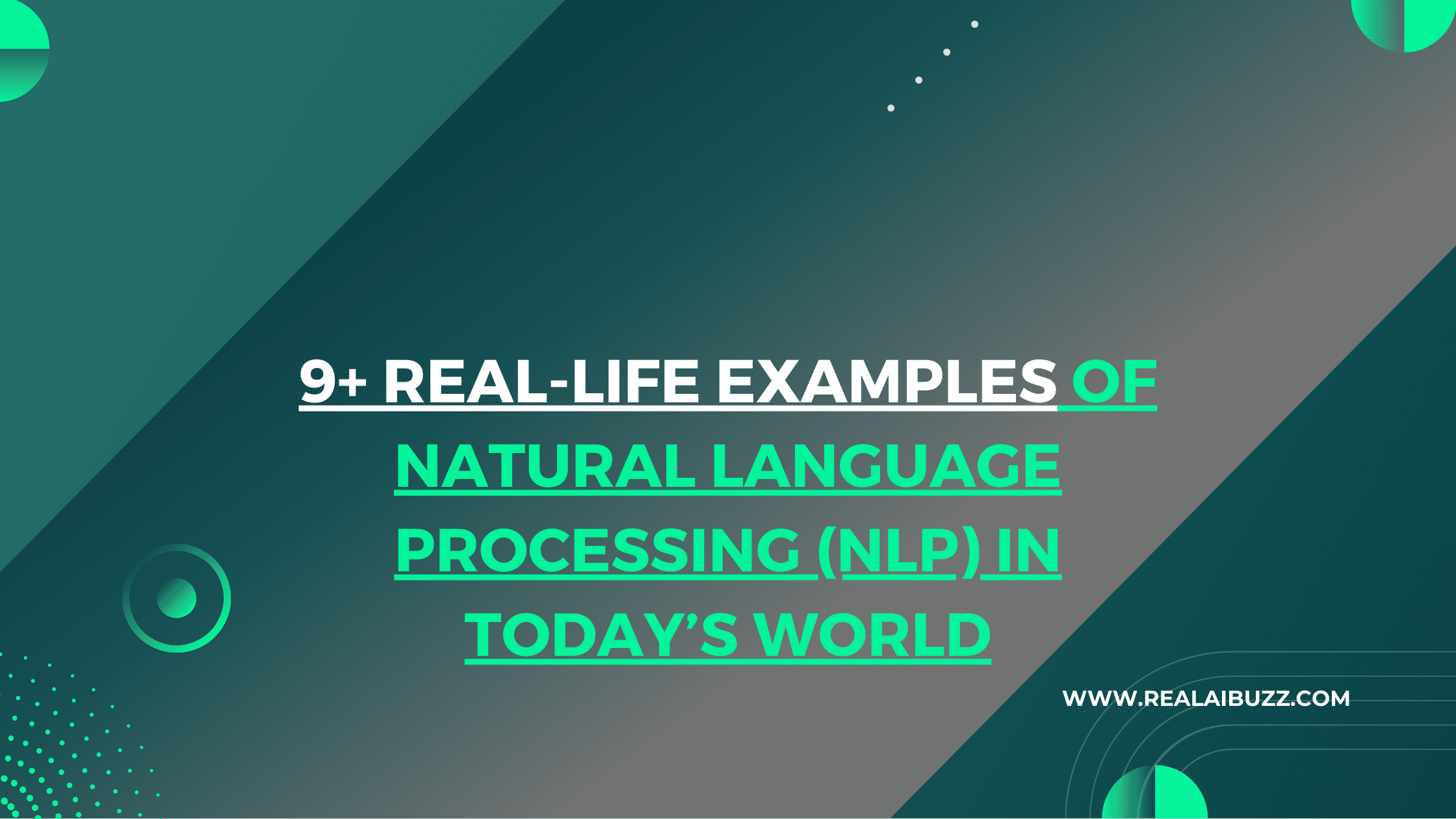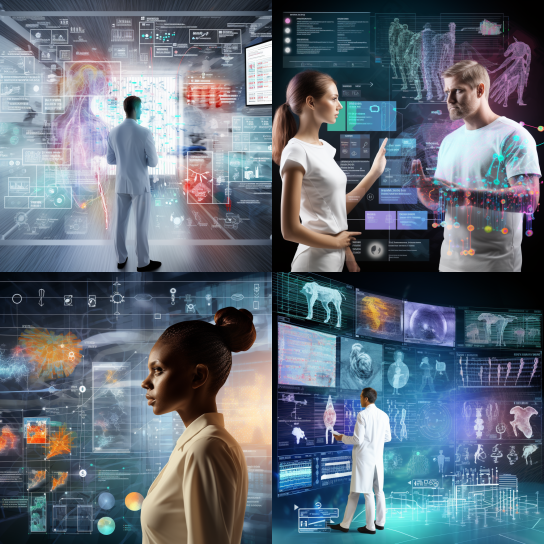Top 9+ Real-Life Examples of Natural language processing (NLP) in Today’s World
Best 9+ Real-Life Applications of Natural language processing (NLP)
Top 9+ Real-Life Examples of Natural language processing (NLP) in Today’s World
Table of Contents
Real-Life Examples of NLP
#1. Email filters
Email filters are one of the most basic and initial applications of NLP online. It started out with spam filters, uncovering certain words or phrases that signal a spam message. But filtering has upgraded, just like early adaptations of NLP. One of the more prevalent, newer applications of NLP is found in Gmail’s email classification. The system recognizes if emails belong in one of three categories (primary, social, or promotions) based on their contents. For all Gmail users, this keeps your inbox to a manageable size with important, relevant emails you wish to review and respond to quickly.
Real "AI Buzz" | AI Updates | Blogs | Education
#2. Chatbots
NLP can be used to build conversational interfaces for chatbots that can understand and respond to natural language queries. This is used in customer support systems, virtual assistants and other applications where human-like interaction is required.
A chatbot like ChatGPT that can help consumers with their account questions, transaction histories and other financial questions might be created by a financial institution using NLP. Customers can easily obtain the information they require thanks to the chatbot’s ability to comprehend and respond to natural language questions.
#3. Speech recognition
NLP can be used to convert spoken language into text, allowing for voice-based interfaces and dictation. This is used in applications such as virtual assistants, speech-to-text transcription services and other voice-based applications.
#4. Spellcheck
Wondering what are the best NLP usage examples that apply to your life? Spellcheck is one of many, and it is so common today that it’s often taken for granted. This feature essentially notifies the user of any spelling errors they have made, for example, when setting a delivery address for an online order.
#5. Sentiment Analysis
Oftentimes, when businesses need help understanding their customer needs, they turn to sentiment analysis.
Sentiment analysis (also known as opinion mining) is an NLP strategy that can determine whether the meaning behind data is positive, negative, or neutral. For instance, if an unhappy client sends an email which mentions the terms “error” and “not worth the price”, then their opinion would be automatically tagged as one with negative sentiment.
#6. Language Translation
One of the most common NLP examples is translation. In the 1950s, Georgetown and IBM presented the first NLP-based translation machine, which had the ability to translate 60 Russian sentences to English automatically.
Translation applications available today use NLP and Machine Learning to accurately translate both text and voice formats for most global languages.
#7. Search results
Search engines use NLP to surface relevant results based on similar search behaviors or user intent so the average person finds what they need without being a search-term wizard. For example, Google not only predicts what popular searches may apply to your query as you start typing, but it looks at the whole picture and recognizes what you’re trying to say rather than the exact search words. Someone could put a flight number in Google and get the flight status, type a ticker symbol and receive stock information, or a calculator might come up when inputting a math equation.
#8. Smart Assistants
Arguably one of the most well known examples of NLP, smart assistants have become increasingly integrated into our lives.
Applications like Siri, Alexa and Cortana are designed to respond to commands issued by both voice and text. They can respond to your questions via their connected knowledge bases and some can even execute tasks on connected “smart” devices.
#9. Personalized CX
The Digital Age has made many aspects of our day-to-day lives more convenient. As a result, consumers expect far more from their brand interactions – especially when it comes to personalization.
Today, the availability of ever more data, advanced analytics and even more advanced technologies means that companies have more information available than ever before with which to build a connection with customers. Furthermore, it’s what customers expect of the companies they do business with: personalization is now the standard for engagement. A McKinsey survey found that “71% of consumers expect companies to deliver personalized interactions.”
#10. Social Media Monitoring
To better understand the applications of this technology for businesses, let’s look at an NLP example. Owners of larger social media accounts know how easy it is to be bombarded with hundreds of comments on a single post. It can be hard to understand the consensus and overall reaction to your posts without spending hours analyzing the comment section one by one.
This powerful NLP-powered technology makes it easier to monitor and manage your brand’s reputation and get an overall idea of how your customers view you, helping you to improve your products or services over time.
Read More









Leave a Reply